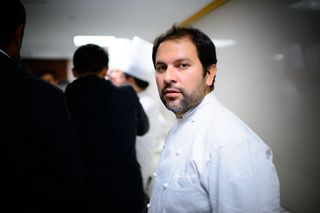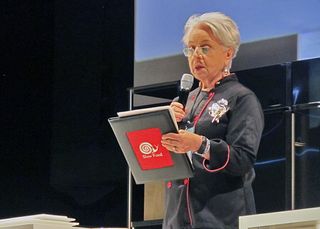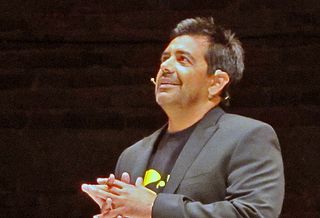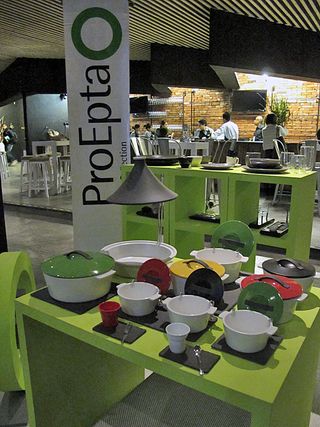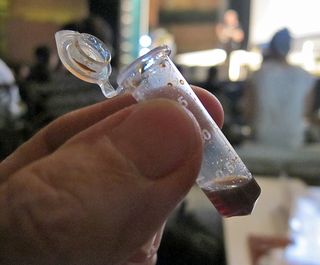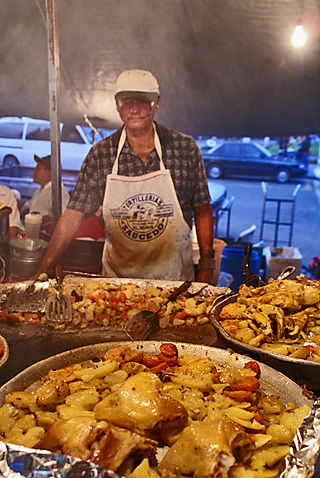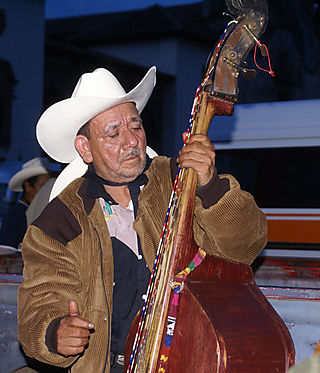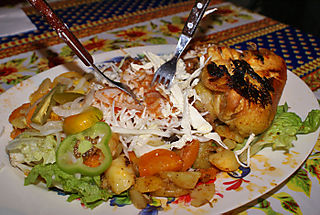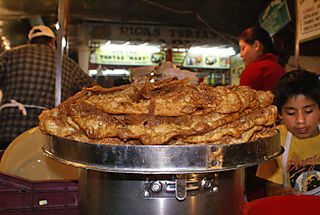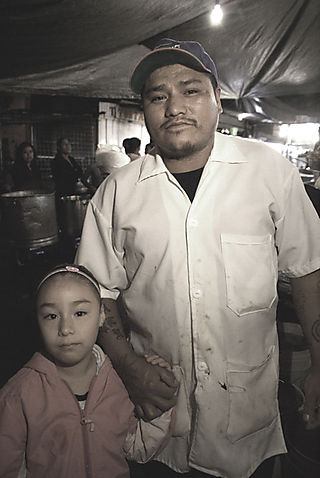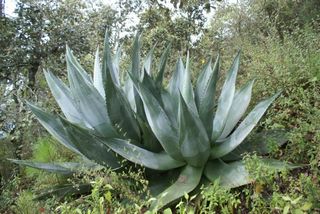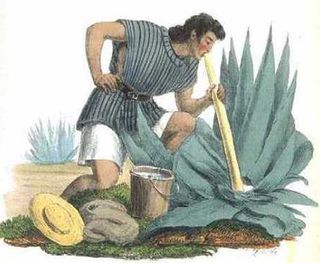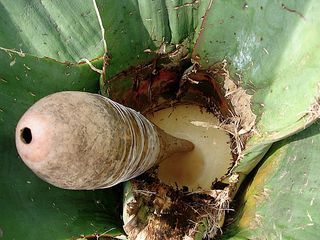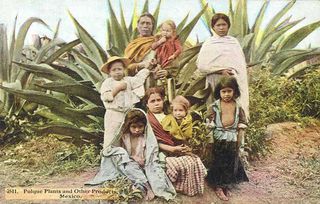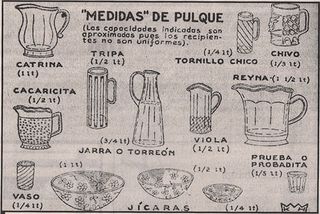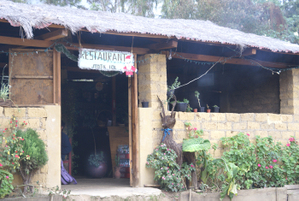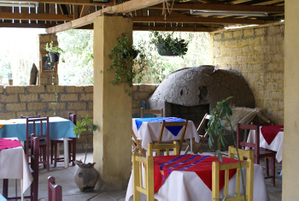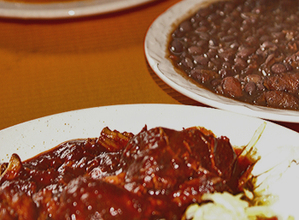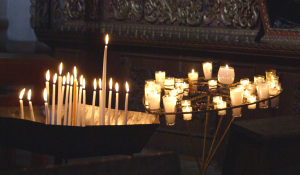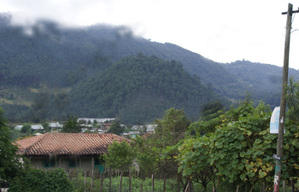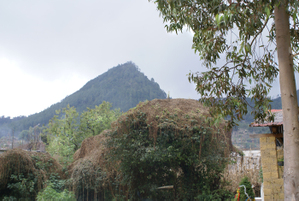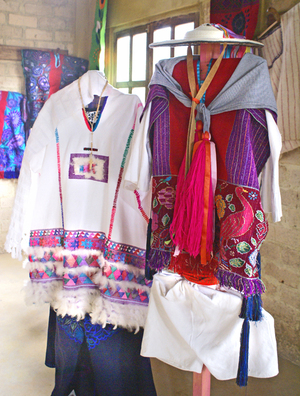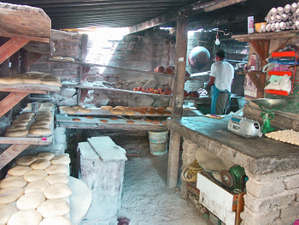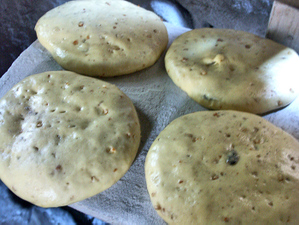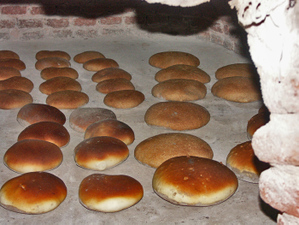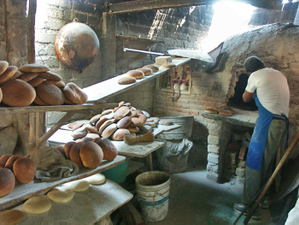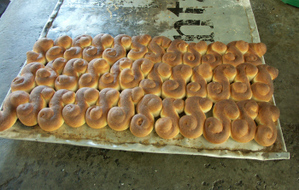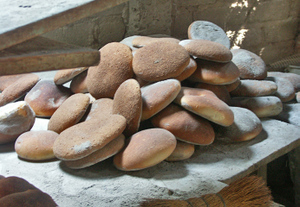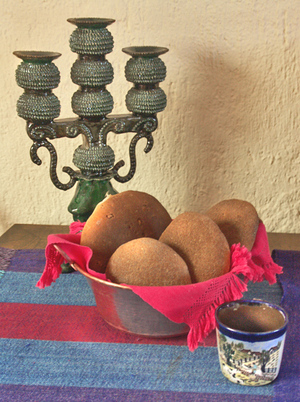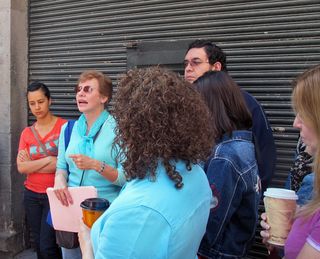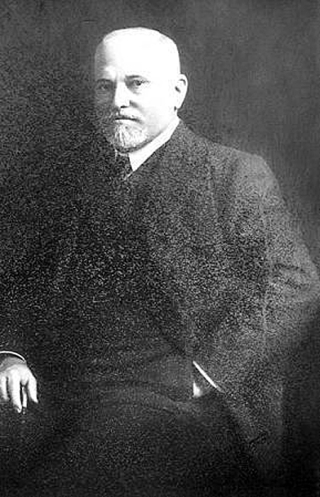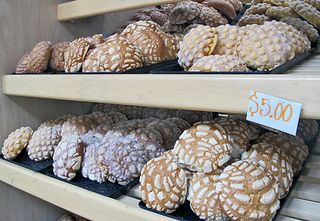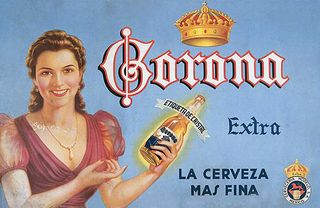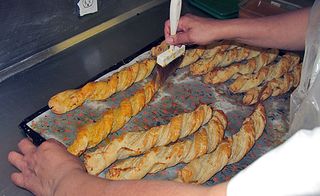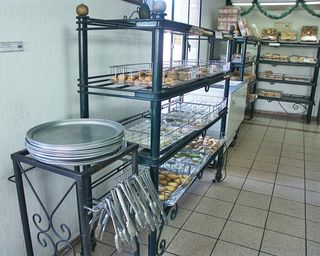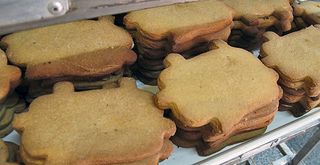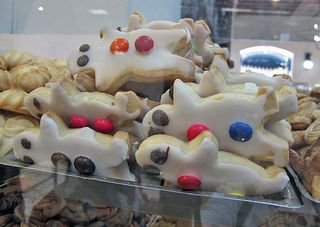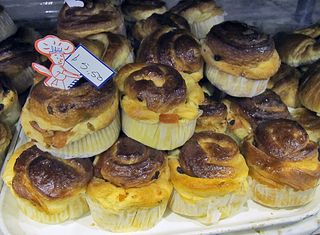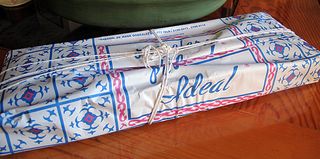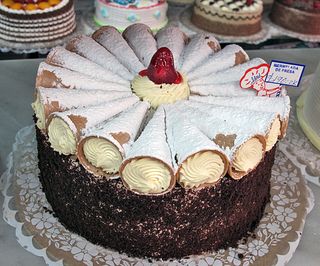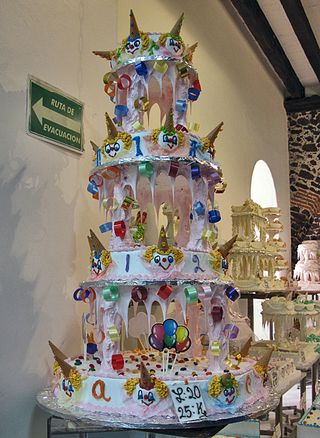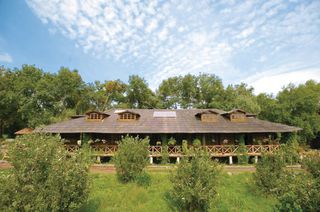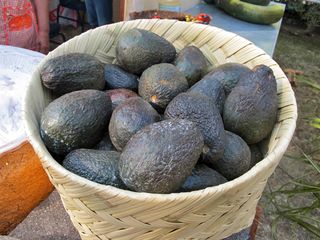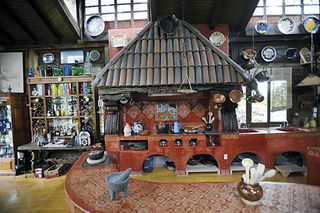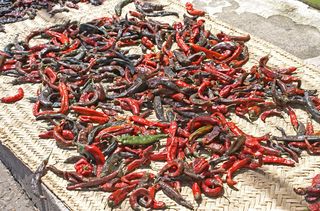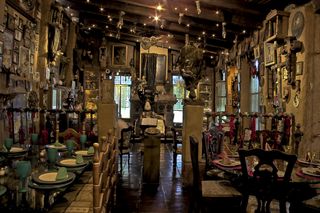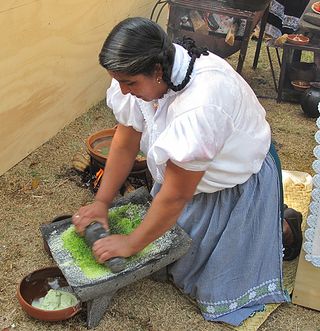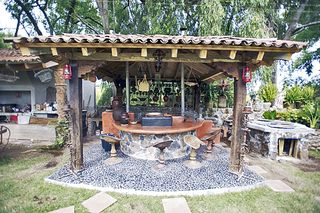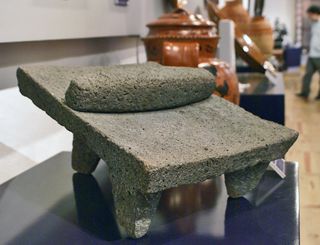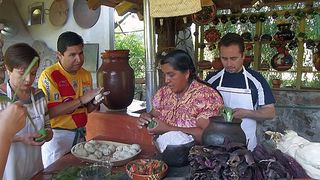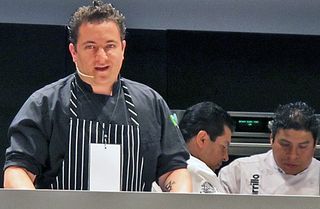
Chef Daniel Ovadía and two of his assistants from Restaurante Paxia in Mexico City, on stage at Day Two of Mesamérica. Like many of the new crop of notable chefs, Chef Daniel offered thoughts about using traditional Mexican ingredients in new ways.
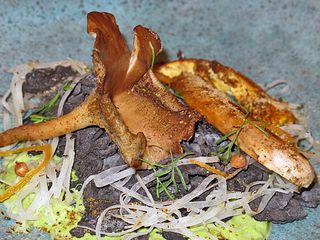
Chef Daniel Ovadía described one of his new creations as a "Mexican surf and turf". It consists of Mexican-raised trout cooked in a coating of tortilla ash and plated with radishes shredded in the form of anguillas (eels), fresh setas (mushrooms), crystallized grapefruit peel, and native cilantro. According to a recent article in the Wall Street Journal, 2012 may well be known as "the year of the ash". Other chefs at Mesamérica also featured ash-y dishes.
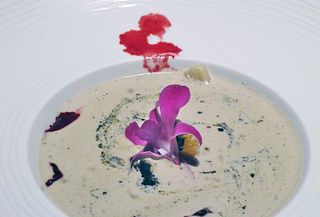
At the end of his presentation, Chef Daniel prepared this dish while a long poem was read. Titled "Todos Queremos un México Mejor" ('Everyone Wants a Better Mexico'), the work is a compilation of answers received from the Paxia staff when asked, "What do you want for Mexico's future?" Here are just a few lines:
- Quiero un MEXICO libre de pensamiento, libres para decidir y actuar, para decir, sin ofender ni afectar a terceros. (I want a MEXICO with freedom to think, where we are free to decide and act–that is to say, without offending or affecting others.)
- Es un trabajo de todos y no solo de gobierno, desafortunadamente el Mexicano es el que tiene
que cambiar, el Mexicano es el que tiene que creer, que querer, no basta ni bastará jamás con
solo pedirlo, soñarlo, imaginarlo o exigirlo a nuestros gobernantes, es una cuestión de credibilidad y lucha de todos, solo cambiando nuestra mentalidad a ser mejores Mexicanos
y mejores seres humanos lograremos el cambio. (It's everyone's job, not just the government's, unfortunately we Mexicans are the ones who have to change, we Mexicans are the ones who have to believe, to want. It's not enough nor will it ever be enough simply to ask, to dream, to imagine, or to insist on things from our government. It's a question of credibility and it's everyone's battle, by only changing our mentality to be better Mexicans and better human beings will we be able to create the change.) - Queremos un MÉXICO que tenga gente orgullosa de ser mexicana, no porque deba ser así, sino porque seamos realmente admirables. Que la gente de otros países se alegre porque llegamos
los mexicanos, a visitar o a trabajar. (We want a MEXICO that has people who are proud of being Mexican–not because they should be, but because we are truly admirable. May people from other countries be overjoyed because we Mexicans are arriving on their shores, either to visit or to work.)
The dish that Chef Daniel prepared is symbolic of Mexico's current troubles (the red spilling down the edge of the plate). Each of the other ingredients is also symbolic of the hopes of those who shared their hopes for Mexico's future. The dish is bathed in the celebratory white mole that is usually served at fiestas.

Wild mushroom expert Connie Green from Napa, California went foraging for Mexican mushroom samples at Mexico City's Mercado San Juan, where seasonal wild mushrooms are always available. Central Mexico is currently in its rainy season; during this time of year, many wild mushrooms are plentiful. Ms. Green was thrilled with what she found here. She pointed out that there are over 3,400 Mexican names for varieties of wild mushrooms, and she was pleased to point out that the chanterelle mushrooms she found here are better than the variety available in Europe.
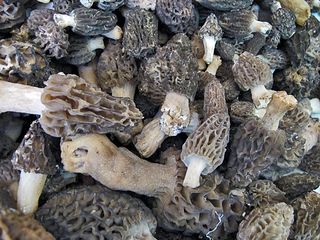
Among other mushroom varieties at Mercado San Juan, Ms. Green was impressed to find fresh morillas (morelles) from Michoacán. Ms. Green also mentioned that the amanita cesaria, one of the great mushrooms of the world, is common in Mexico but rare in Europe. She also said that the tricholoma matsutake, the second most valuable mushroom in the world, is grown in Oaxaca but exported to Japan, where it is prized for its for its distinct spicy-aromatic odor.
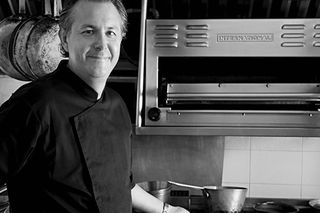
Chef Guillermo González Beristáin (Restaurante Pangea, Monterrey) gave a fascinating explanation of the long-ago origins of some common foods–goat, lamb, and wheat flour tortillas–in his city in far-northern Mexico. Early Jewish settlers brought these foods, common to their native lands, to Mexico with them. It was easy to understand the reason for goat and lamb, but wheat flour tortillas? Chef Guillermo said that this new-world bread was reminiscent of old-world pita. He also mentioned that in households with middle-Eastern origins, three trees are traditionally planted in the family garden: a fig tree (representing the family), a pomegranate tree (representing wisdom), and a lemon tree (representing resignation). He was obviously moved as he told the audience that he now has one of each tree in his own Monterrey garden.
Chef Guillermo also showed a video of himself and several companions truffle-hunting just outside Monterrey. Because the climate is similar to that of the south of France, five varieties of truffles grow there, in symbiosis with local oak trees. Only one variety is edible. He mentioned that the gentleman who told him about local Monterrey truffles had never seen or tasted a European truffle until Chef Guillermo brought him one from France.
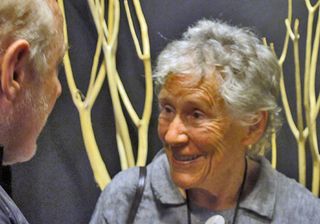
Diana Kennedy greets Mark Miller shortly before her Mesamérica talk. Mrs. Kennedy, British author of nine important books recounting the history and preparation of traditional Mexican dishes, is one of the most knowledgeable food historians in Mexico.
Mrs. Kennedy, a well-recognized and important pillar in the world of Mexican food, spoke as she often does: frankly and directly to the point. Her point at Mesamérica was, as she said, to speak the uncomfortable truth. She said, "Mexican cuisine worries me, above all the ingredients that are being used. It's a great scandal that so-called Mexican products are being imported from other countries." She specifically mentioned chile guajillo and chile de árbol, both of which are being imported to Mexico from China, and flor de jamaica (hibiscus flowers, commonly used for agua fresca and other applications), which are being imported from the Sudan. Mrs. Kennedy is outraged that buying foreign products undercuts the livelihood of Mexican producers and particularly the campesinos (field workers). She ardently urged that foreign chiles and jamaica be boycotted in favor of their Mexican-grown counterparts. Although she smiled as she shook her fist, it is obvious that Mrs. Kennedy is both passionate and angry–and rightly so–about any foreign takeovers of Mexico's ingredients.
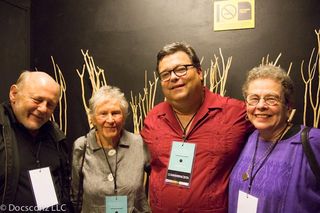
Mark Miller, Diana Kennedy, Steve Sando, and Mexico Cooks! at Mesamérica. Photo courtesy John Sconzo, LLC.
Next week: Day Three of Mesamérica. Be there or be square–all your favorite chefs give it their all.
Looking for a tailored-to-your-interests specialized tour in Mexico? Click here: Tours.
